
Scoparia nomeutis is a moth in the family Crambidae. It was named by Edward Meyrick in 1884. Meyrick gave a description of this species in 1885. It is endemic to New Zealand.
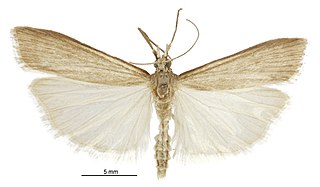
Scoparia augastis is a moth in the family Crambidae. It was described by Edward Meyrick in 1907. This species is endemic to New Zealand.
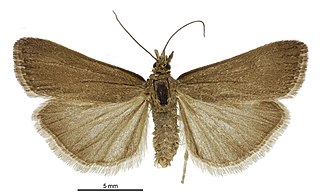
Scoparia autochroa is a moth of the family Crambidae. It was described by Edward Meyrick in 1907. This species is endemic to New Zealand.

Scoparia encapna is a moth of the family Crambidae. It was described by Edward Meyrick in 1888. It is endemic to New Zealand.
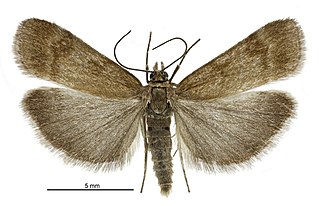
Scoparia ergatis is a species of moth in the family Crambidae. It is endemic to New Zealand.
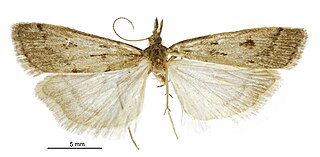
Scoparia fumata is a species of moth in the family Crambidae. It is endemic in New Zealand.

Scoparia indistinctalis is a species of moth in the family Crambidae. It is endemic to New Zealand.

Scoparia lychnophanes is a species of moth in the family Crambidae. It is endemic to New Zealand.
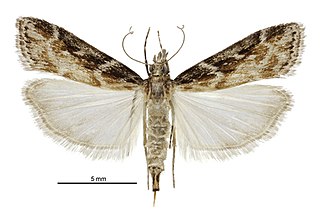
Scoparia molifera, also known as the leather-leaf Scoparia, is a species of moth of the family Crambidae. This species was first described by Edward Meyrick in 1926 and is endemic to New Zealand. It can be found in the North and South Islands. The larvae of this species make silk tunnels from which they mine the leaves of their host, the leather-leaf fern Pyrrosia eleagnifolia. Adult moths are on wing from December to February and are attracted to light.

Scoparia petrina is a species of moth in the family Crambidae. It was named by Edward Meyrick in 1884. Meyrick gave a description of the species in 1885. It is endemic to New Zealand.
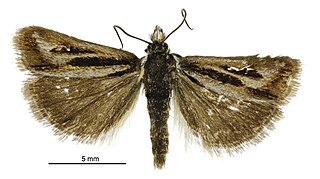
Scoparia subita is a species of moth in the family Crambidae. It is endemic in New Zealand.
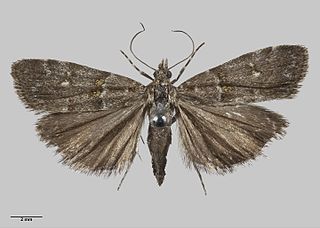
Scoparia sylvestris is a species of moth of the family Crambidae. It is endemic in New Zealand.
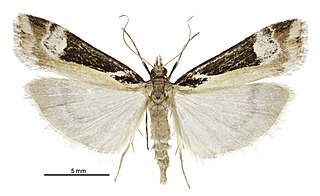
Scoparia trapezophora is a species of moth in the family Crambidae. It is endemic in New Zealand.
Scoparia vulpecula is a species of moth in the family Crambidae. It is endemic to New Zealand.
Scoparia acropola is a moth in the family Crambidae. It was described by Edward Meyrick in 1885. It is found in Australia, where it has been recorded from Tasmania.
Scoparia chiasta is a moth in the family Crambidae. It was described by Edward Meyrick in 1885. It is found in Australia, where it has been recorded from New South Wales.
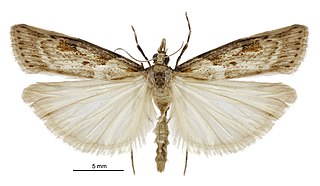
Scoparia dryphactis is a moth in the family Crambidae. It was described by Edward Meyrick in 1911. This species is endemic to New Zealand.

Scoparia niphospora is a moth in the family Crambidae. It is endemic to New Zealand.
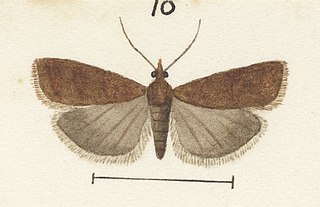
Scoparia parachalca is a moth in the family Crambidae. It was described by Edward Meyrick in 1901. It is endemic to New Zealand.
Scoparia philonephes is a moth in the family Crambidae. It is found in Australia, where it has been recorded from Victoria and South Australia.















